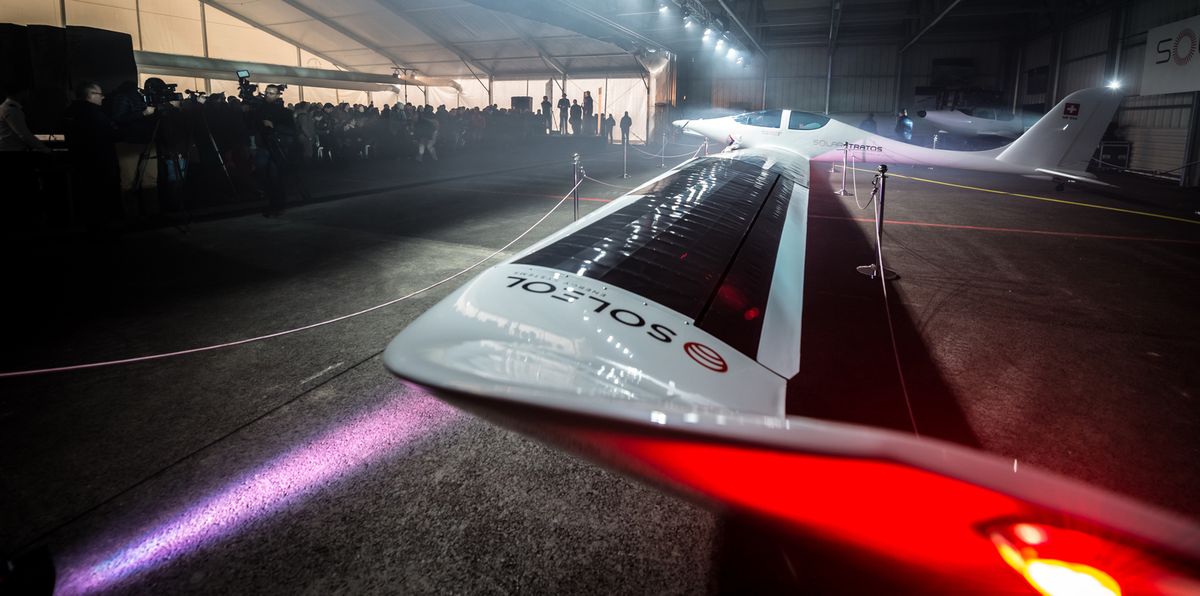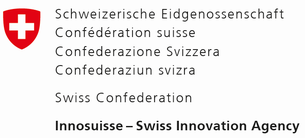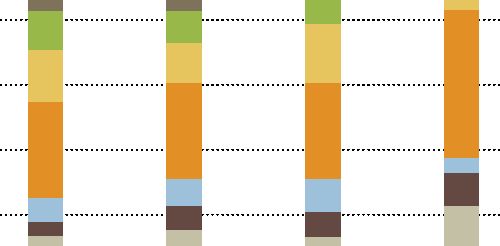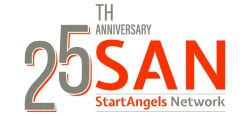
SolarStratos was unveiled today in Payerne. The solar aircraft can fly at an altitude of 25,000 metres which opens the door to the possibility of electric and solar commercial aviation, close to space.
Raphael Domjan’s stratospheric solar plane was unveiled this morning to 300 guests, including ambassadors, partners, government representatives and the world’s media. The unique 8.5-metre-long aircraft has a wingspan of 24.8 metres, weighs 450 kilogrammes and is covered with 22m2 of solar panels. It will be the first manned solar-powered aeroplane to penetrate the stratosphere.
“This is a great day for the SolarStratos team,” said Raphael Domjan, creator of PlanetSolar, the first solar-powered boat to do a circumnavigation in 2012 and the initiator and pilot of the SolarStratos project. “Our goal is to demonstrate that current technology offers us the possibility to achieve above and beyond what fossil fuels offer. Electric and solar vehicles are amongst the major challenges of the 21st century. Our aircraft can fly at an altitude of 25,000 metres and this opens the door to the possibility of electric and solar commercial aviation, close to space.”
Reaching the stratosphere over the past century has required large quantities of energy or helium. Today, the SolarStratos aircraft offers clean solar and electric aviation for the equivalent environmental footprint of an electric car.
“We are extremely pleased with the positive feedback and encouragement that we have received,” said Roland Loos, CEO of SolarXplorers S.A., the organisation in charge of the development and future applications of this endeavour. “Our project brings hope and makes both children and adults dream. It also opens the door to new scientific knowledge – at an affordable price, exploration and the peaceful use of our stratosphere.”
Initiated in 2014, the SolarStratos project is currently in the development phase. The roll tests, the first touch and go landings and the test flights will take place in February 2017, while the medium altitude flights are planned for the summer. Initial stratospheric flights are scheduled for 2018. Travelling to the stratosphere will take approximately five hours: 2.5 hours to reach space, 15 minutes of broad daylight and stars, then 3 hours to return to Earth.
For weight purposes, the aircraft will not be pressurised, so Raphael Domjan will wear a spacesuit powered by solar energy – another world first.
SolarStratos aims to promote renewable energies by demonstrating that concepts and projects that seemed inconceivable five years ago have become possible due to technological innovations and developments that are still in their infancy, particularly in terms of solar aviation.
(Press Release)
Picture: Zeppelin / SolarStratos























































Please login or sign up to comment.
Commenting guidelines